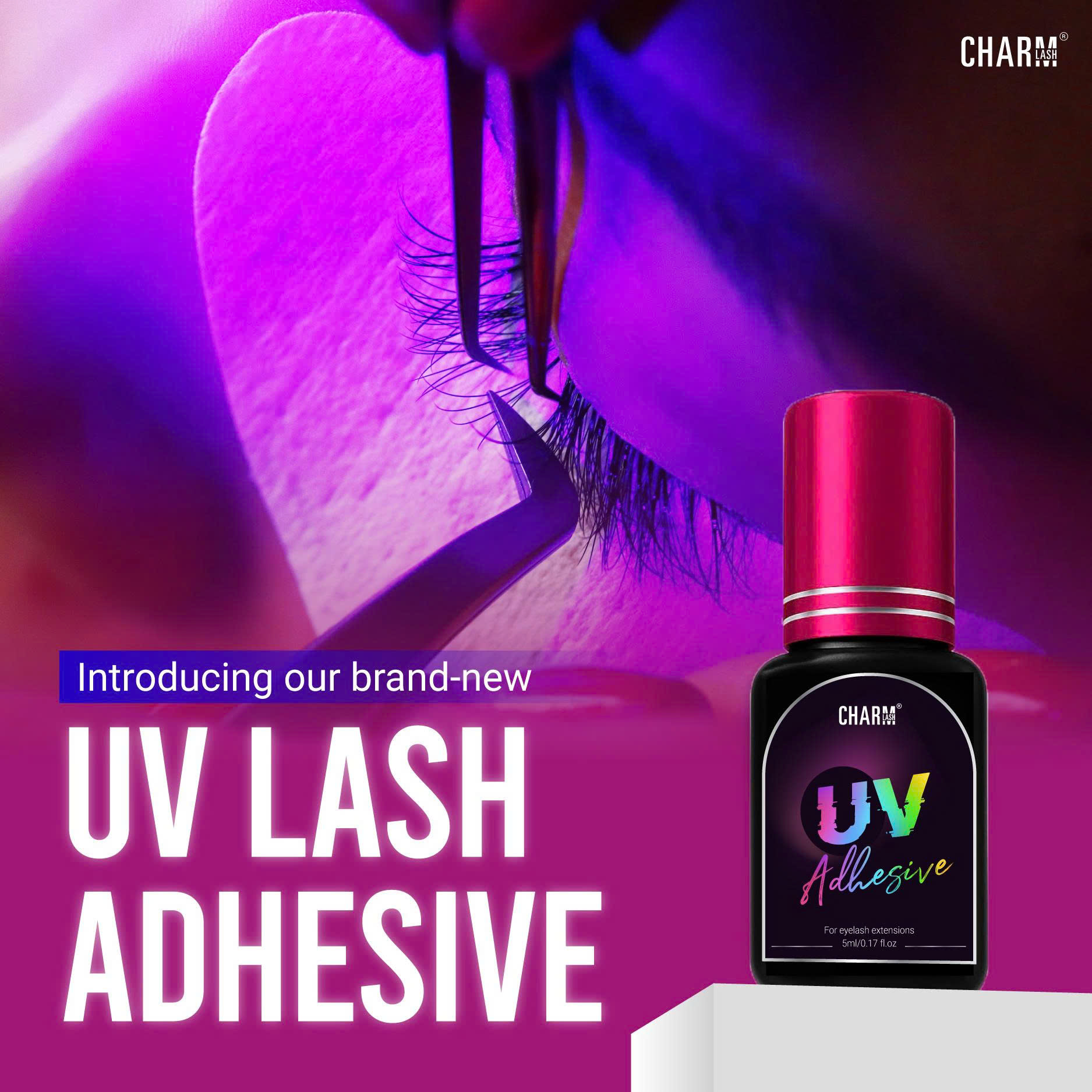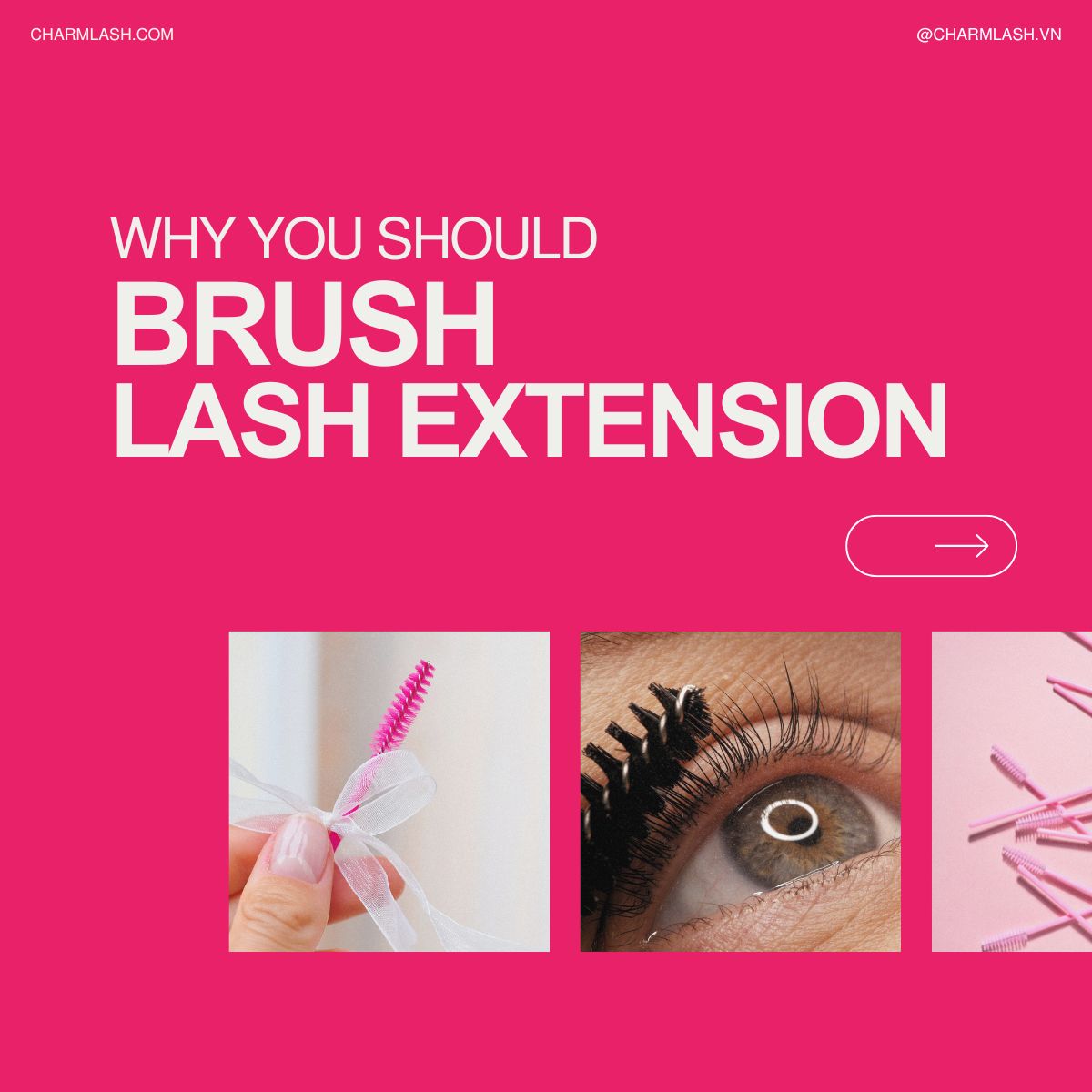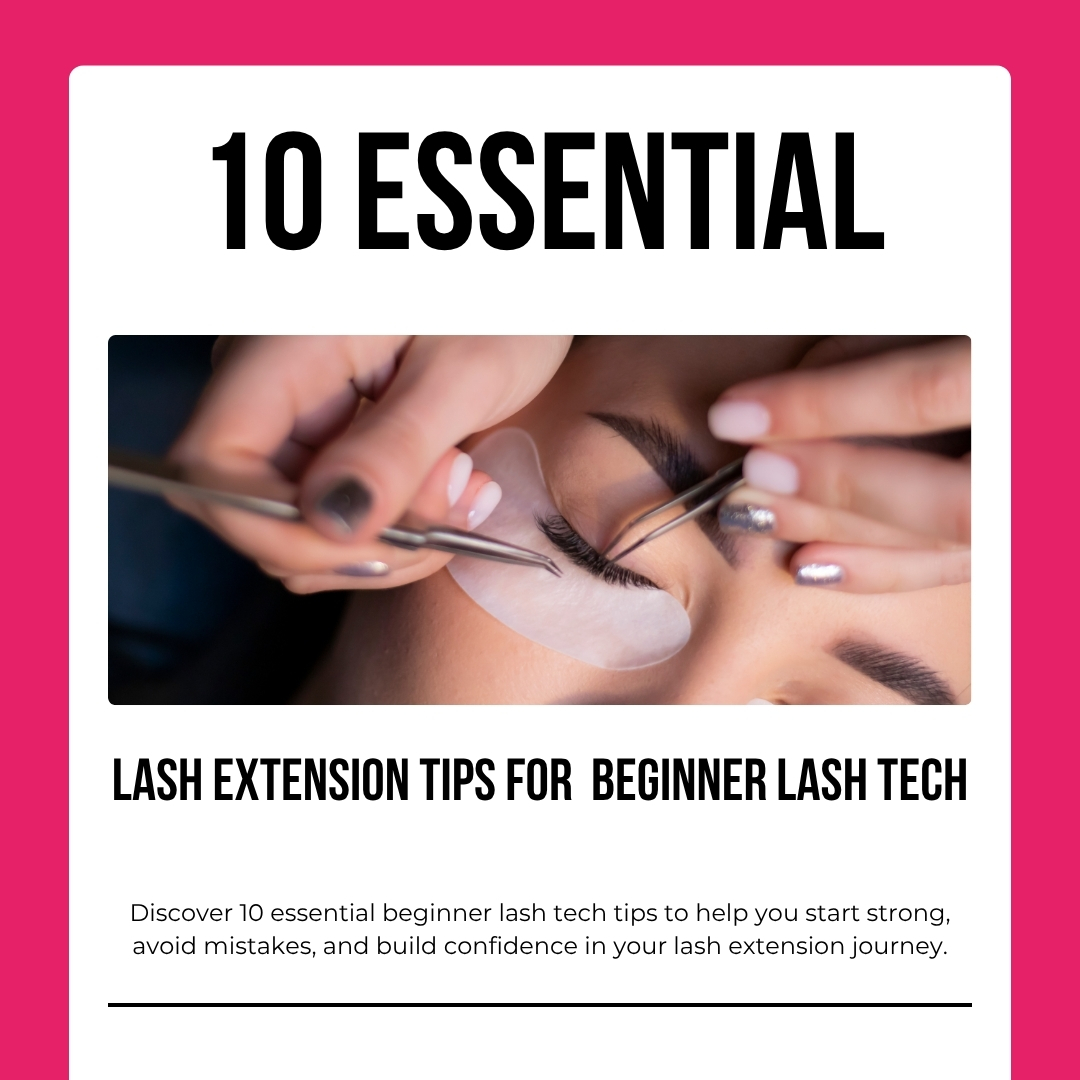You love your eyelash extensions—they make your lashes look amazing. But what if they start causing a bothersome allergic reaction? One possible culprit could be a lash extension allergy, a rare but troublesome reaction that lash lovers should be aware of. This guide is here to help you understand why this happens and what you can do about it. Whether you’re a lash fan or a lash artist, let’s explore how to deal with lash extension allergy together.
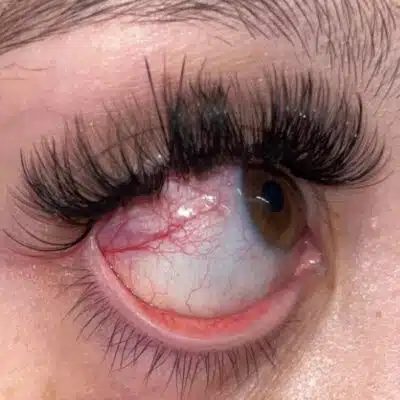
The reason why you got lash extension allergy
Lash extension glue allergies often stem from specific allergens present in the adhesive. Let’s take a closer look at these key culprits. Understanding the root causes of lash extension allergy is essential for both clients and lash artists to minimize risks.
Cyanoacrylate
This common ingredient in lash adhesives is notorious for triggering allergic responses. It’s the primary cause of most lash extension allergy cases among lash clients. It’s the adhesive’s bonding agent, but for some, it can lead to irritation. The allergic reaction to cyanoacrylate can vary in severity, ranging from mild irritation to more severe symptoms. It occurs when the body’s immune system mistakenly identifies cyanoacrylate as a threat and releases histamines and other chemicals to fight it off. These chemicals can cause symptoms like itching, redness, swelling, and discomfort.
Carbon black
Carbon black is a finely divided form of carbon, often used as a pigment in dark-colored adhesives to create a deep black hue. However, it’s rarely problematic and often depends on your physiology. Although carbon black reactions are rare, they can still occasionally contribute to lash extension allergy symptoms.

Formaldehyde
Formaldehyde is NOT in any eyelash extension adhesive, but it is created during the crying time of lash adhesive. In some sensitive individuals, even trace formaldehyde exposure can trigger a lash extension allergy. Exposure to small amount of formaldehyde is not harmful to health, but for some who have s strong reaction to formaldehyde, it might be a big deal.
Tape
Taping the bottom lashes before the extension process does matter, but if it is not done properly e.g putting the tape is way too high, it can scratch the inner eye and lead to eye redness.

Symptoms of allergy
If you notice multiple symptoms listed above, it’s likely you’re dealing with a mild or severe lash extension allergy.
Allergic reactions to lash extensions can manifest in various ways, including:
- Itching
- Redness
- Swelling
- Burning and stinging
- Tearing
- Discomfort
- Dryness
- Blurred Vision
- Running nose
- Headaches
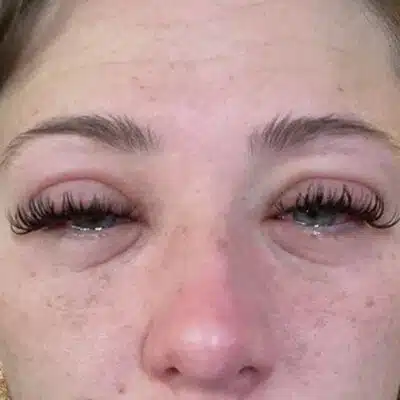
Recognizing these symptoms early is crucial for timely intervention!
How common is lash extension allergy?
While uncommon, lash extension allergies can occur. Knowing how to spot and address a lash extension allergy early can prevent more serious discomfort. Being aware of the possibility is vital for prompt action.
How long does an allergic reaction to eyelash extensions last?
The duration of an allergic reaction varies based on its severity. Some individuals may experience symptoms for a few hours, while others may endure discomfort for several days. It’s essential to monitor your symptoms and seek medical attention if they persist or worsen.
What to do if you get lash extension allergy?
Dealing promptly with a lash extension allergy is key to minimizing irritation and ensuring faster recovery. If you or your clients experience lash extension allergies, there are several treatment options available to alleviate discomfort and manage symptoms. The choice of treatment may depend on the severity of the reaction. Here’s some “how to treat lash extension allergy” might help:
Cold compress

Applying a cold compress to the affected area can provide immediate relief by reducing itching, redness, and swelling. Gently place a cold compress, such as a clean cloth soaked in cold water or an ice pack wrapped in a cloth, on the closed eyelids for 10-15 minutes. Repeat as needed for comfort.
Cortisone cream

cortisone creams contain anti-inflammatory properties that can help reduce itching, redness, and inflammation associated with allergic reactions.. If you got any symptoms above, apply a small amount of cortisone cream to the affected area following the product’s instructions.
Antihistamines (e.g., Benadryl)
Antihistamines like Benadryl can help counteract histamine release in the body, reducing allergy symptoms such as itching, swelling, and redness. Follow the recommended dosage instructions on the product’s label. Be cautious when using antihistamines, as they can cause drowsiness. Avoid driving or operating heavy machinery if you experience drowsiness.

Remove the entire set and seek for medical treatment
In severe cases where the allergic reaction is extensive or accompanied by severe discomfort, it’s crucial to remove the entire set. This is a necessary step to halt the allergic reaction and allow the affected area to heal. For a safe and effective removal process, you can consider using CharmLash lash extension removal cream. This specially formulated cream is designed to break down the adhesive bond gently, making the removal process more comfortable and reducing the risk of further irritation.
How to prevent lash extension allergies
Preventing lash extension allergies is crucial for a comfortable lash experience. Taking proactive steps can greatly lower the chance of developing a lash extension allergy during or after application. Some preventive measures include:
Get to know your clients
Prior to the lash appointment, inquire whether your clients have a history of allergic reactions. This proactive approach allows you to tailor your lash application accordingly.

Opt for sensitive adhesives
If a client has a history of allergies, consider using a sensitive adhesive. Clear glue, which does not contain carbon black, can be an excellent choice to reduce the risk of allergic reactions. For clients who are sensitive to traditional adhesives, scented glue can be a game-changer, minimizing any unwanted odors and enhancing the overall lashing experience.
Conduct a lash patch test
Always request a patch test before applying a full set of extensions. This simple step can help identify any sensitivities your client may have, safeguarding both their well-being and your business reputation. To learn how to do a lash patch test, check out our blog for more details Lash patch test: Why it is important and how to do

Fan the lash
As mentioned earlier, formaldehyde can be released during the lashing process, potentially causing discomfort and stinging for your clients. By fanning the lash set, you can effectively dissipate any fumes and minimizes the risk of exposure to potential allergens

Proper tapping method
When taping the bottom lashes, pay meticulous attention to detail. Ensure the tape is correctly positioned, avoiding placement too high, which can strain the outer corner of the eye and lead to discomfort and redness.
Can I get lash extensions again if I get allergic reactions to lash extensions?
Yes, you can certainly consider getting lash extensions again, even if you’ve had allergic reactions to them in the past. While experiencing allergic reactions can be concerning, it doesn’t necessarily mean you can’t enjoy lash extensions. With careful consideration and proper precautions, it’s possible to minimize the risk of allergic responses and safely enjoy the benefits of lash extensions.
Lash extension allergies, though rare, can impact clients and artists. Understanding their causes, symptoms, and prevention is crucial for a safe and enjoyable lash experience. Prioritizing health ensures a beautiful lash journey for all
 Afrikaans
Afrikaans Albanian
Albanian Amharic
Amharic Arabic
Arabic Armenian
Armenian Azerbaijani
Azerbaijani Basque
Basque Belarusian
Belarusian Bengali
Bengali Bosnian
Bosnian Bulgarian
Bulgarian Catalan
Catalan Cebuano
Cebuano Chichewa
Chichewa Chinese (Simplified)
Chinese (Simplified) Chinese (Traditional)
Chinese (Traditional) Corsican
Corsican Croatian
Croatian Czech
Czech Danish
Danish Dutch
Dutch English
English Esperanto
Esperanto Estonian
Estonian Filipino
Filipino Finnish
Finnish French
French Frisian
Frisian Galician
Galician Georgian
Georgian German
German Greek
Greek Gujarati
Gujarati Haitian Creole
Haitian Creole Hausa
Hausa Hawaiian
Hawaiian Hebrew
Hebrew Hindi
Hindi Hmong
Hmong Hungarian
Hungarian Icelandic
Icelandic Igbo
Igbo Indonesian
Indonesian Irish
Irish Italian
Italian Japanese
Japanese Javanese
Javanese Kannada
Kannada Kazakh
Kazakh Khmer
Khmer Korean
Korean Kurdish (Kurmanji)
Kurdish (Kurmanji) Kyrgyz
Kyrgyz Lao
Lao Latin
Latin Latvian
Latvian Lithuanian
Lithuanian Luxembourgish
Luxembourgish Macedonian
Macedonian Malagasy
Malagasy Malay
Malay Malayalam
Malayalam Maltese
Maltese Maori
Maori Marathi
Marathi Mongolian
Mongolian Myanmar (Burmese)
Myanmar (Burmese) Nepali
Nepali Norwegian
Norwegian Pashto
Pashto Persian
Persian Polish
Polish Portuguese
Portuguese Punjabi
Punjabi Romanian
Romanian Russian
Russian Samoan
Samoan Scottish Gaelic
Scottish Gaelic Serbian
Serbian Sesotho
Sesotho Shona
Shona Sindhi
Sindhi Sinhala
Sinhala Slovak
Slovak Slovenian
Slovenian Somali
Somali Spanish
Spanish Sundanese
Sundanese Swahili
Swahili Swedish
Swedish Tajik
Tajik Tamil
Tamil Telugu
Telugu Thai
Thai Turkish
Turkish Ukrainian
Ukrainian Urdu
Urdu Uzbek
Uzbek Vietnamese
Vietnamese Welsh
Welsh Xhosa
Xhosa Yiddish
Yiddish Yoruba
Yoruba Zulu
Zulu

















